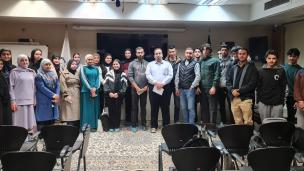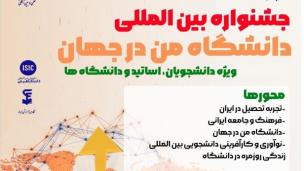Iran is a large country with a diverse climate in the heart of the Middle East. It is in a unique geographical position, bordered by the Caspian Sea to the north and the Persian Gulf to the south, and has a variety of tourist attractions in the fields of history, art, nature, health, and education.
Climate The climate of central Iran is arid continental, with hot summers, cold winters, and low humidity and high-temperature fluctuations. The Caspian coast has a maritime, humid, and temperate climate. But in the south, on the shores of the Persian Gulf and the Sea of Oman, the climate is tropical. In Tehran, the average temperature in July is 30 degrees and it can heat up to 40 degrees. In January, the average temperature fluctuates between 2 degrees and -10 to 10 degrees Celsius. Ethnicities Not only is Iran one of the most ancient civilizations in the world but it is also a country of great diversity in ethnic groups. The majority of Iranians are ethnically Persian, yet, there are people from various ethnic, religious, and linguistic backgrounds who also reside in Iran. Albeit all these groups have their own traditions, customs, languages, clothes, and lifestyles, they are all called Iranians and live together peacefully as a large united community. It should be noted that they are spread over the whole country and Farsi is their official language too. These groups are Azerbaijanis, Kurds, Lurs, Mazandaranis and Gilakis, Arabs, Baluchi, and Turkmens.
Religion Islam is the official religion of Iran. The dominant portion of Muslims are Shi'a, the rest are Sunni. Also Zoroastrian, Jewish, and Christian are religious minorities who are all free to perform their religious rites and ceremonies within the limits of the law.
Language Persian, Farsi, is the official language of Iran. It is also used in Tajikistan and Afghanistan (along with Pashto). The official language of India was also Persian before the arrival of British colonization. In 1872, Greek, Persian, Latin, and Sanskrit were chosen as the world's classical languages. By definition, a language is considered classical that is ancient, rich in literature, and has undergone little changes in its last millennium. Moreover, Persian is among the top three languages in the world in terms of the number and variety of proverbs.
Currency
Persian Customs Every country has its own customs and traditions. Iran is no exception to this rule and has some national festivals which are passed down from generation to generation and celebrated nationwide every year. Undoubtedly, the roots of many customs and cultures of the Iranian people can be found in our ancient rituals and celebrations. All these festivals have a common concept: emphasizing the value of the family and friendship.
|








 Iran's official unit of currency is the Iranian Rial (IRR) and all notes are printed in Iranian Rial. Yet in daily life, you almost always heard Toman for business exchanges, purchases, and any economic matters. Don’t get confused. Toman is the unofficial monetary unit and just another way to tell the price of goods and services. But keep in mind that all the bank affairs and services are in Rial. To convert Rials to Tomans, just delete one zero from the amount in Rial.
Iran's official unit of currency is the Iranian Rial (IRR) and all notes are printed in Iranian Rial. Yet in daily life, you almost always heard Toman for business exchanges, purchases, and any economic matters. Don’t get confused. Toman is the unofficial monetary unit and just another way to tell the price of goods and services. But keep in mind that all the bank affairs and services are in Rial. To convert Rials to Tomans, just delete one zero from the amount in Rial.






